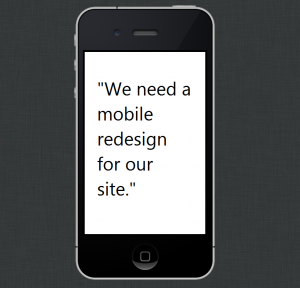 The marketing world, especially the online marketing world, has made great strides in recent years moving towards being more scientific, more data-driven, more evidence-based, etc. in its approaches.
The marketing world, especially the online marketing world, has made great strides in recent years moving towards being more scientific, more data-driven, more evidence-based, etc. in its approaches.
The ability to run live experiments on web pages (e.g. A/B/n split and Multivariate) has made being “scientific” about conversion optimization much more feasible, so hats off to those software vendors that continue to bring us those abilities.
So while we all “talk the talk” of testing our landing pages and shopping carts, I sometimes get the impression that we’d “walk the walk” even better if we had more solid backgrounds in science and especially in the Scientific Method as it pertains to experimentation.
I was guilty of not paying attention in science classes, and not focusing much on science courses in college. In fact, I think I’ve learned more about the Scientific Method in my work on Conversion Rate Optimization than I did in school!
If you could use a primer on how exactly the Scientific Method should be used to run a test on your website or other marketing touchpoints, I’m going to break down the scientific steps in very marketing-centric language. Continue reading →
 I’ve written a fair amount over the years about using the
I’ve written a fair amount over the years about using the  One of the more common excuses I hear for marketers not conducting experiments on their websites is a “lack of resources.” This generally refers to not having designers and developers at their disposal to create new versions of site pages, new graphics, new layouts, etc.
One of the more common excuses I hear for marketers not conducting experiments on their websites is a “lack of resources.” This generally refers to not having designers and developers at their disposal to create new versions of site pages, new graphics, new layouts, etc. The marketing world, especially the online marketing world, has made great strides in recent years moving towards being more scientific, more data-driven, more evidence-based, etc. in its approaches.
The marketing world, especially the online marketing world, has made great strides in recent years moving towards being more scientific, more data-driven, more evidence-based, etc. in its approaches.

 I’ve heard similar comments from several marketers lately that concern me a bit, so I wanted to post a bit of a warning, and of course provide some alternative thoughts.
I’ve heard similar comments from several marketers lately that concern me a bit, so I wanted to post a bit of a warning, and of course provide some alternative thoughts.